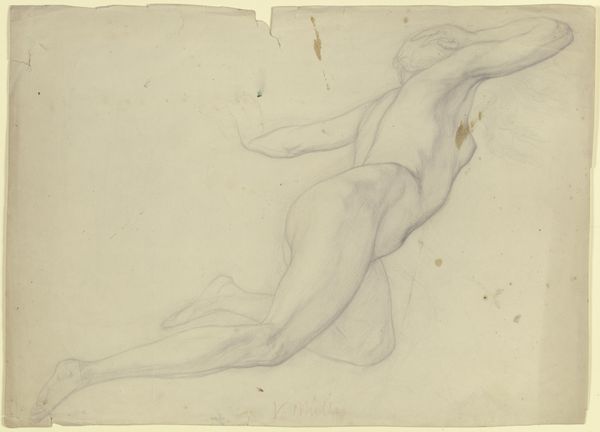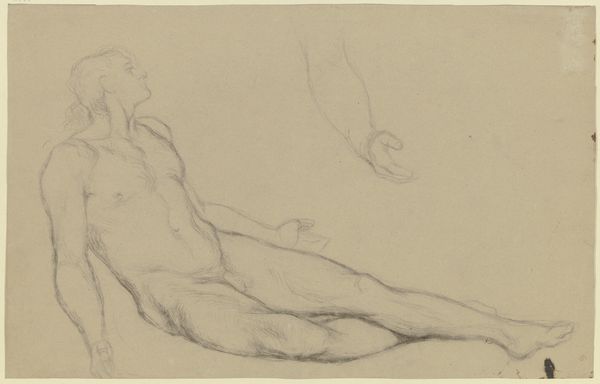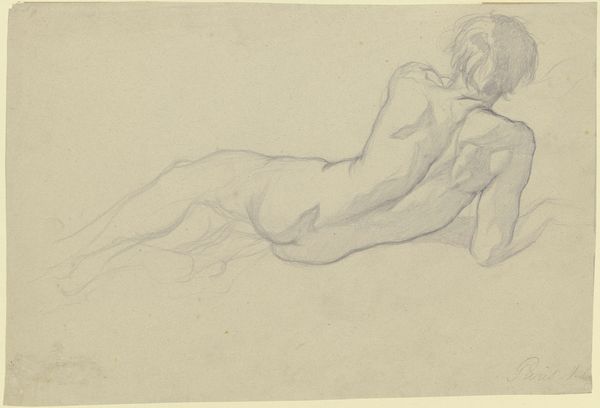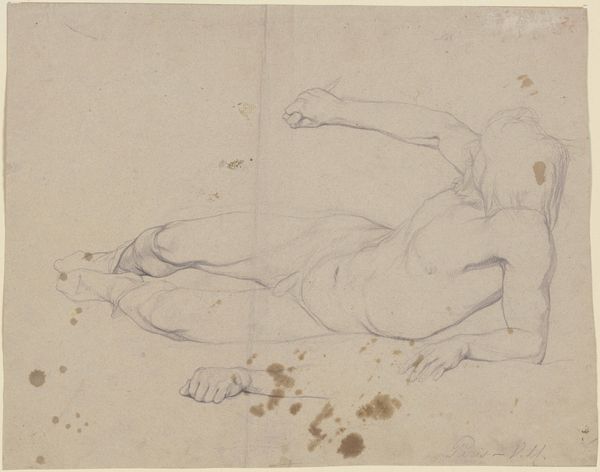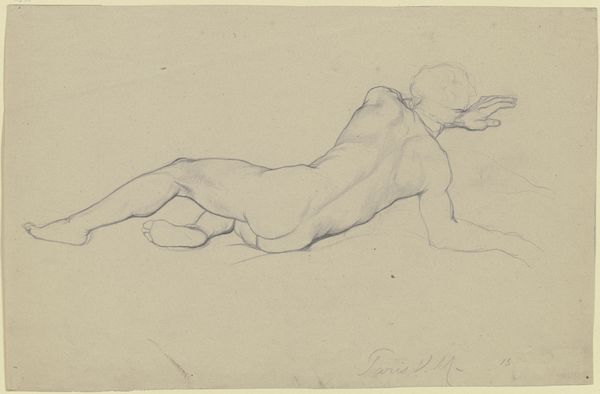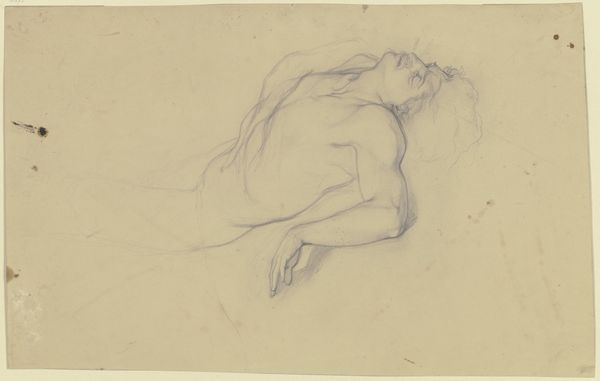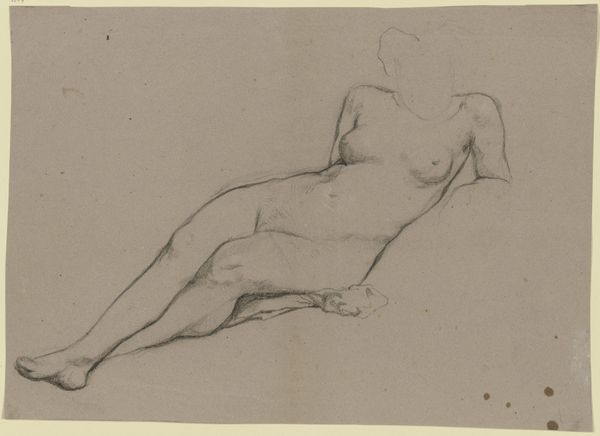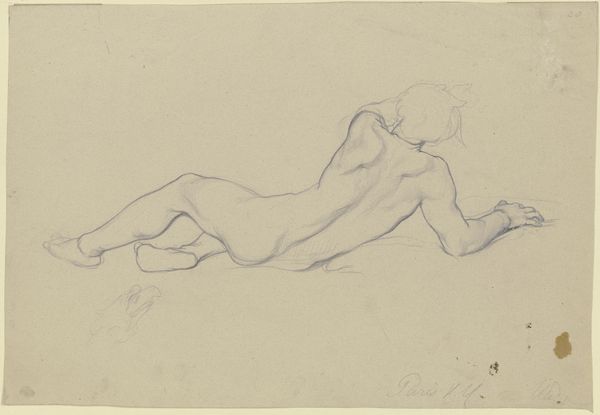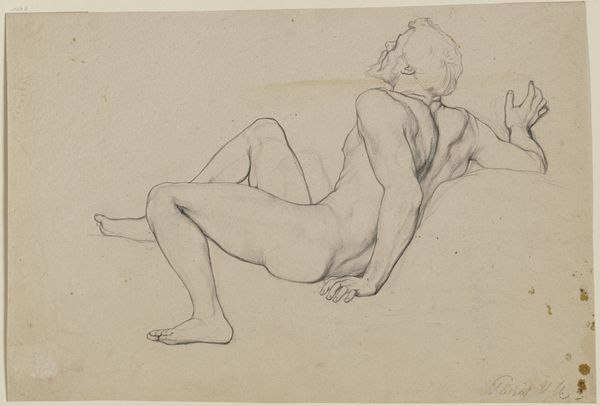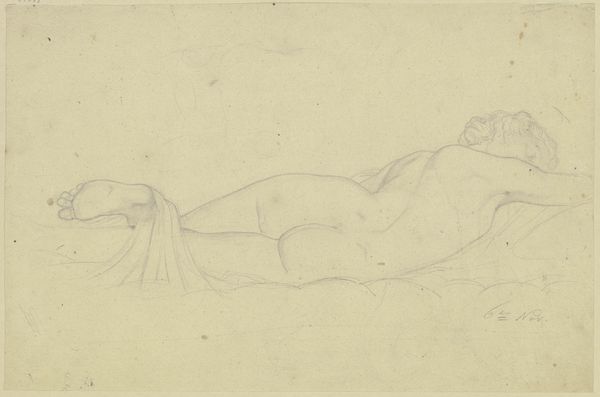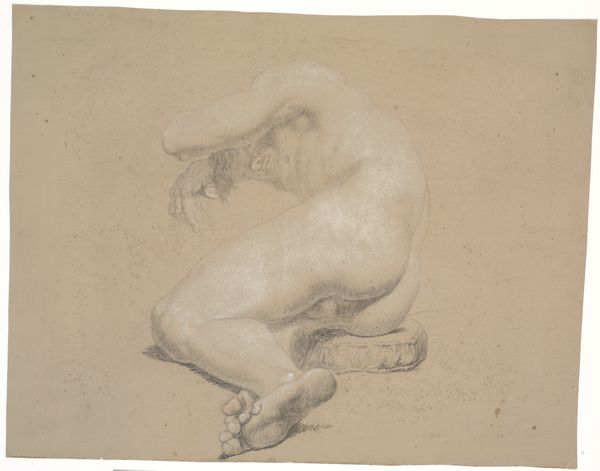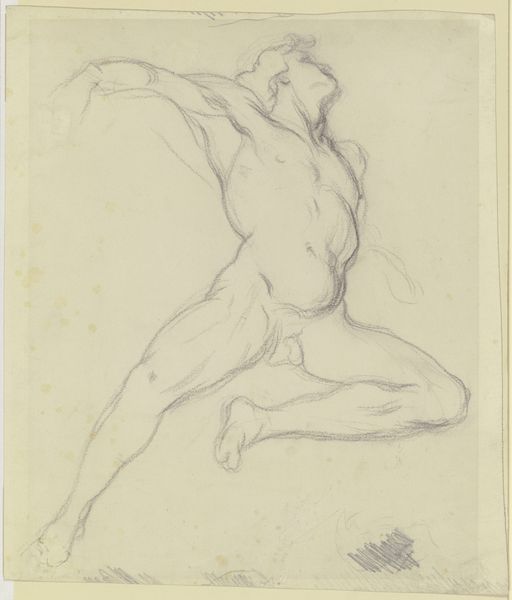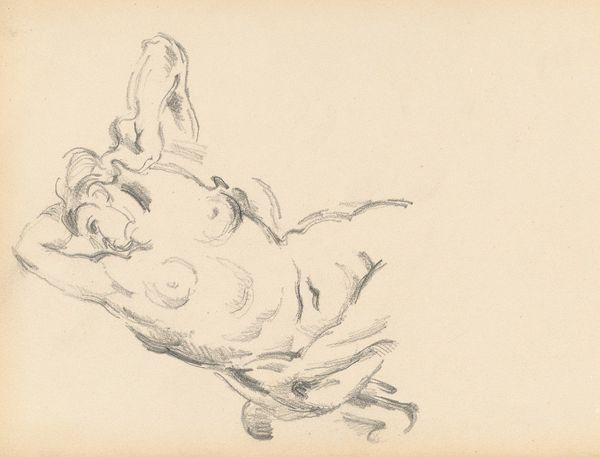
Lagernder männlicher Akt in Rückansicht, mit angedeuteter Draperie (eines Kissens_)
0:00
0:00
drawing, paper, dry-media, pencil, chalk, charcoal
#
portrait
#
drawing
#
16_19th-century
#
charcoal drawing
#
paper
#
dry-media
#
pencil drawing
#
pencil
#
chalk
#
charcoal
#
nude
Copyright: Public Domain
Curator: What a striking study this is. We’re looking at "Lagernder männlicher Akt in Rückansicht, mit angedeuteter Draperie (eines Kissens_)" a male nude in charcoal, chalk, and pencil on paper by Victor Müller, currently held here at the Städel Museum. It's undated, so it’s tricky to place definitively, but it's usually associated with the 19th century. What leaps out at you? Editor: Initially, the almost hesitant quality of the lines. The figure, seen from behind, is rendered with such delicacy. It's not just an anatomical study; there's a vulnerability there, an inward-looking mood. It reminds me a bit of early photographic studies, a longing for perfection through rendering of flesh and bone. Curator: That's insightful. It’s certainly a departure from the often idealized, heroic nudes we see of this period. He isn’t a god or a mythical figure, simply a man in repose. It’s intimate, even, which can feel almost subversive when you consider the time it was likely made. I'm also intrigued by the unfinished sketch of what seems to be a draped figure or pillow –it adds another layer of intimacy, as though we're catching a glimpse into the artist's process. Editor: The lack of idealization resonates profoundly, especially when considering historical contexts that pushed strict canons of beauty. The work presents the male form not as a symbol of power, but as something fragile and temporary, really. Think about it, isn't that vulnerability emphasized by the slightly faded tones and the blotches on the page? Curator: I think so, yes. Those seemingly random spots feel accidental, but they strangely echo the organic imperfections of the body itself. In an odd way, it mirrors our own transience, that nothing, neither art nor life, can escape the effects of time. I notice as well the economy of line. Müller isn't interested in exhaustive detail; rather, he uses a few carefully placed marks to suggest form and volume. Editor: Yes, precisely. It suggests, rather than dictates. And I wonder if that pillow or drapery functions, symbolically, as a kind of support. As if acknowledging the need for comfort, both physically and, perhaps, emotionally? There is a psychological aspect, in a way the icon shows not just a body but also how it bears the marks of simply being. Curator: A very thoughtful way of seeing it. It makes me consider the private struggles, the silent moments of vulnerability, we all experience. Müller captures this feeling with remarkable honesty. Editor: Ultimately, a very unassuming, subtle artwork manages to resonate, still, on a very human level. Curator: Indeed. It lingers with you, doesn't it? Long after you've moved on to the next artwork.
Comments
No comments
Be the first to comment and join the conversation on the ultimate creative platform.
